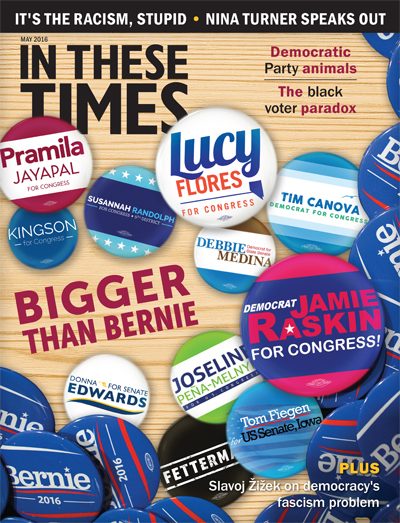Even a Time Finance Columnist Is Now Questioning American Capitalism
Rana Foroohar’s “Makers and Takers” breaks down crisis-prone U.S. economy
Chris Lehmann

Casual browsers might mistake Rana Foroohar’s Makers and Takers for a Tea Party manifesto. The phrase is most famously identified with House Speaker Paul Ryan, who warned in 2010 that “takers” — i.e., people who receive more in federal benefits than they pay in taxes — were poised to become the majority of Americans, eclipsing the “makers” — the business owners and financiers who create hardy economic value.
But Foroohar, an economics columnist for Time and analyst for CNN, inverts Ryan’s callow sloganeering to devastating effect. Makers and Takers is a closely argued, richly reported anatomy of the sluggish, unequal and crisis-prone state of the U.S. economy under the dictates of financialization — the tax giveaways, financial-sector deregulation, securitized debt, etc., that are celebrated by figures such as Ryan.
Take, for example, the fanciful pretext for Ryan’s remarks: the well-worn lament that to even slightly increase regulations is to browbeat would-be job creators into a state of paralysis. In truth, Foroohar notes, “there isn’t a shred of evidence to suggest that lowering taxes on the rich makes them any more or less likely to invest or start businesses.”
Indeed, citing a 2015 report from the Office of Financial Research, Foroohar notes that since the great crucible of the 2008 meltdown, corporate earnings “are rising” even as “sales growth for most public U.S. companies is not.” Astonishingly, as Democrats and Republicans alike have nonsensically preached austerity to the nation at large, the investor class — the real layabout “takers” — has sunk into an ocean of red ink, with corporate debt ballooning from $5.7 trillion in 2006 to $7.4 trillion today. Most of this dosh is repackaged into exotic new financial instruments designed to maximize short-term shareholder returns. In the 1970s, American companies invested more than 15 times what they paid out to shareholders; now that ratio is below 2 to 1.
Behind these dismal trends, Foroohar observes, is a whole complex of perverse incentives that have worked since the deregulating heyday of Ronald Reagan to stoke greater returns for Wall Street at the expense of the broader economy regardless of which party happens to be in power. The landmark repeal of the 1933 Glass-Steagall Act and the passage of the disastrous Orwellian Commodity Future Modernization Act were the handiwork of New Democrat Bill Clinton, whose economic legacy was well to the right of Richard Nixon. Meanwhile, the anemic phalanx of federal regulators charged with policing Wall Street have turned law enforcement into little more than a kabuki ceremony.
Foroohar characterizes Washington as being in a state of “cognitive capture,” such that the overall mindset of the regulatory state is a wholly owned subsidiary of the financial sector. To her credit, she traces this development not to some heavy-breathing cabal in the Senate cloakroom, but to broader forces. Business school curricula, to take one powerful example, have long been in thrall to econometric models aiming to maximize short-term investor returns at the expense of all else. And corporate raiders and arbitrageurs — who had formerly (and justly) been derided as destroyers of economic value for the sake of paper returns — are now regarded as “shareholder activists,” prodding corporate boards to continually bid up quarterly returns via stock buybacks, mergers and other shortsighted manipulations.
Nor does Foroohar spare her own profession, noting the “subtle intimidation” of the business press in bankorganized press events meant to discourage any probing or unsettling questions: “Those who ask for slower or clearer answers to difficult questions or admit to not understanding something (usually some decision that reflects badly on the administration when explained more clearly) are liable to get an eye roll, or an impatient drumming of the fingers, or even an end to future meetings of this kind.”
Fortunately, Makers and Takers does not shy away from these difficult questions or the broader implications of their answers. The “oligopolistic interests” at the helm of Wall Street are “remaking our unique brand of American capitalism into a crony capitalism more suited to a third-world autocracy than a supposedly free-market democracy.” When a veteran Time economics hand is sounding like a Bernie Sanders surrogate, we should all be alarmed.









